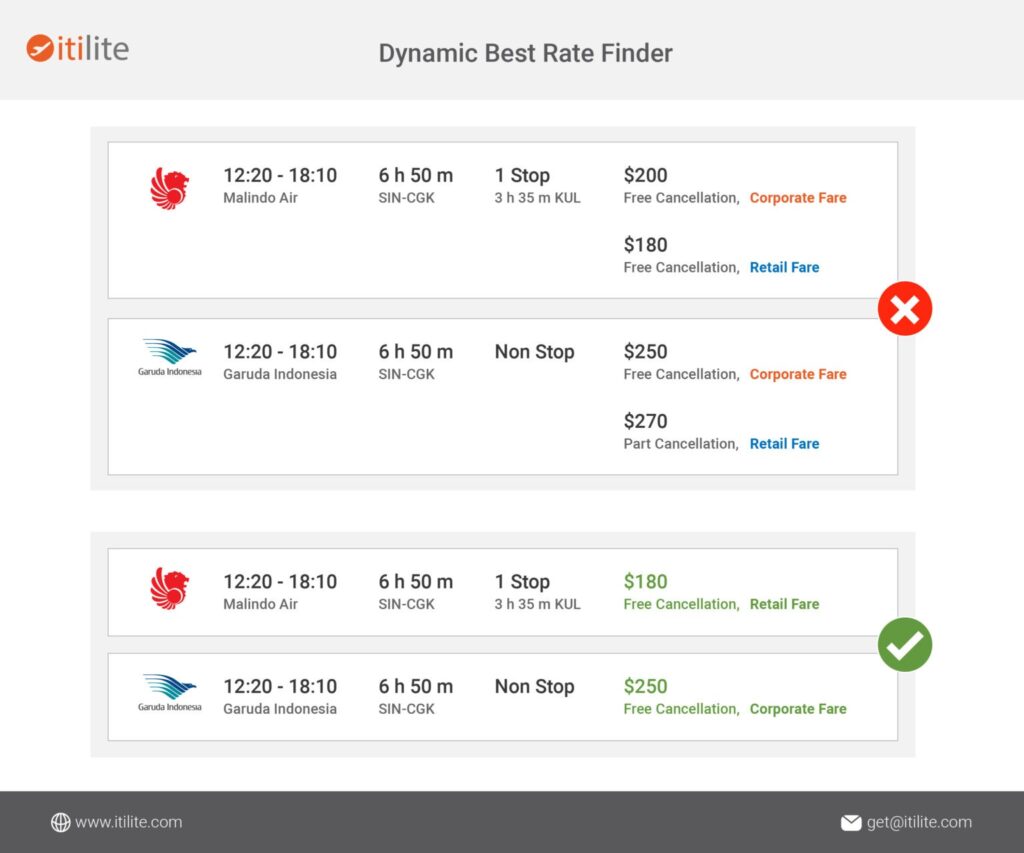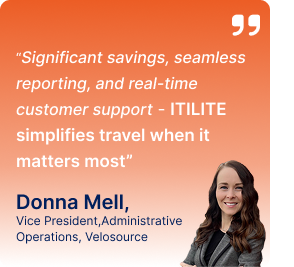
Reducing travel costs might seem challenging, especially if your employees travel to different places worldwide. Business travel costs can strain the company’s finances when exceeding the budget. This overspending can result in lower profit margins. Additionally, it may force companies to cut back on future travel to compensate.
To reduce travel costs, you need an advanced travel and expense (T&E) management process that helps you increase efficiency. This process must also be a combined effort of all stakeholders involved—travel managers, finance managers, and all employees.
Read on to learn effective ways to control your overall business travel expenses.
Try using our savings calculator to estimate your potential savings on corporate travel expenses by implementing cost-saving measures.
Read on to learn some effective ways of controlling your overall business travel expenses.
How to Reduce Travel Costs on Business Travel?
Here are some tips to help you reduce business travel costs and ensure your employees’ stress-free travel experience.
1. Update your Travel Policy
Take a closer look at your corporate travel policy and check if it is robust enough to cover every area of travel spending—transportation and hotel bookings, meal allowances, and any other expenses employees incur during the trip (site spending, etc.).
Draft a corporate travel policy with clear procedures and guidelines that help your employees make decisions within your policy limits without incurring additional costs.
2. Encourage Travel Policy Adoption
Controlling out-of-policy bookings is a sure-shot way to reduce travel costs. There can be various reasons for your employees not being compliant with your travel policy, such as ineffective communication, complicated policy, etc. Ensure all employees are well aware of and adopt the policy.
You can do it by:
Creating Simple, Easy-to-Understand Policies
Policy adoption will only increase once employees understand the “why” of things. So, make sure your policy is written in easy-to-understand language and clearly and prominently highlights the advantages of following it.
Communicating it to Employees Effectively
Share travel policies with employees via channels that are easily accessible. – intranet, emails, etc.
You can also conduct regular training sessions and quizzes regarding the travel policy to ensure 100% awareness.
Automating Policies via a T&E Management Solution
Businesses must understand how to reduce travel costs to manage their budgets more efficiently. Make sure the travel and expense management software you have or choose to have has an inbuilt policy feature that lets you present the terms of the travel policy to employees at the time of booking (the policy is right there when they need it!).
This helps reduce business travel costs, as the employee is aware of her expense limit and is notified if anything is booked out of policy.
Providing a Self-Booking Option
You must give your employees more freedom and responsibility to manage their corporate travel. They feel more confident, comfortable, and happy while booking the hotels or airlines they like.
Integrate a T&E solution (travel and expense) management system like itilite that allows an employee to book their trip within the policy limits or get approval for extra spending.
Suggested Read:
7 Ways to Ensure ROI When Traveling for Business
3. Have an Automated Pre-Trip Approval Process
One of the best ways to reduce travel costs is to use a travel and expense management tool that completely automates your approval workflows. For instance, if there is any out-of-policy booking, the system will send an email to the manager for approval.
In addition, you can set parameters for trips that require approval. For instance, you can add a filter on any trip departing in less than 10 days and send emails notifying the manager. This will help in making bookings at cost-effective rates.
4. Offer Incentives for Cost-Efficient Booking
Knowing how to cut business travel costs can significantly impact your company’s bottom line. When an employee chooses a more cost-effective or low-budget option for travel or stay, they are saving the company money. So, why not reward them for this? You can give them a voucher or a share of the savings.
This improves employee experience and encourages them to keep doing it. Many travel management software solutions help you incentivize your travel programs for employees and save money.
5. Encourage Employees to Plan Ahead
Last-minute hotel and flight bookings can be costly. To reduce travel costs, you should encourage your employees to always plan at least 15-20 days ahead of their business travel. The closer the travel date, the higher the price of the airline or hotel will be.
Sometimes, there are emergency cases in which you have to make last-minute bookings. And that is okay! But be smart and make sure that the trip is necessary and well-planned in advance.
6. Provide Access to a Global Travel Inventory
This is one of the best ways to immediately start cutting business travel costs. Make sure the T&E management solution you choose has a global inventory of hotels and flights, including low-cost airlines.
Also, having a T&E system that shows employees options with corporate rate discounts could also help reduce travel costs.For instance, itilite business travel management comes with a feature of dynamic pricing for hotels and airlines so that the system automatically compares fares and finds (and suggests) the best one for the employees.

Apart from this, being open to alternative accommodation options can be cost-effective, especially during long stays.
7. Fix Cost Leakages with Virtual Travel Consultant
Reducing business travel costs won’t be possible without understanding which part of the expenses needs attention. Hence, you should invest in a T&E solution that offers advanced travel data insights. Some advanced solutions, like itilite, provide a virtual travel consultant- Mastermind.
This AI-powered consultant analyzes your company’s past travel data to identify cost leakages, conducts industry benchmarking, and suggests actionable steps you can take to save on business travel.
8. Automate Reimbursement
Consider automating reimbursement if you’re wondering how to reduce the business travel cost. Having a manual system of expense filing & reimbursement may lead to errors and inefficiencies. For instance, if an employee submits a consolidated bill or expense report of the entire trip for reimbursement, you won’t have any information about the additional expenses, like laundry, charged to the room. You may end up reimbursing the entire amount.
Automating your reimbursement process will simplify expense filing for employees and eliminate any manual filing errors.
Moreover, they should be able to scan and upload all the invoices on the go, eliminating all manual work. This will help with accurate expense filing, further reducing travel costs.
Reduce Travel Costs with Technology
We hope this blog helped you understand how to cut business travel costs. These are just some of the many ideas you can use to reduce business travel costs. The revenue saved from identifying cost leaks and optimizing the travel budget can be utilized in other core processes.
itilite is a corporate travel management software that helps you manage your travel costs effectively, achieve near 100% policy compliance, reward your employees for choosing hotels/flights within budget, and more.
How itilite Helps Save Travel Costs?
| Feature | How It Helps Reduce Travel Costs |
| Budget-to-Beat Incentives | Encourages employees to choose travel options below the set budget and shares the savings as incentives, reducing costs. |
| Advance Flight Bookings | Rewards employees for booking flights early, securing lower flight and hotel rates. |
| Automatic Price Re-booking | Re-books flights automatically when prices drop, ensuring the same flight, seat, and cabin at a lower cost. |
| Unused Flight Credits Management | Tracks and utilizes unused flight credits from canceled trips, saving money on future bookings. |
| Company-Negotiated Rates | The platform increases the use of negotiated rates for flights, hotels, and car rentals by displaying preferred options. |
| Rate Negotiation Services | We negotiate new corporate rates at no extra cost, adding more cost-saving options to the system. |
| Automated Compliance with Guidelines | Ensures bookings adhere to travel policies, avoiding overspending and ensuring efficient approval workflows. |
| Elimination of Reimbursements | Centralized payments reduce administrative overhead and save time, eliminating the need for reimbursement processes. |
| AI-Powered Insights | Identifies invisible spending gaps and suggests updated policies or approval flows for additional savings. |
Try itilite to learn how to reduce travel costs.
Calculate your savings now!
FAQ’s
You can cut business travel costs by negotiating volume discounts with preferred vendors, implementing strict travel policies for cost-effective bookings, and utilizing technology tools to monitor spending. Further, you can partner with a travel management company to reduce travel costs.
You can calculate business travel costs by summing up transportation expenses such as flights and car rentals, accommodation costs including hotel stays, and daily allowances for meals and incidentals.
To reduce travel costs, book in advance to secure lower rates and negotiate corporate discounts with preferred vendors. Encourage employees to use cost-effective alternatives like economy flights and budget accommodations. Additionally, implement strict travel policies, use technology to optimize expenses, and consider virtual meetings to reduce the frequency of travel.








